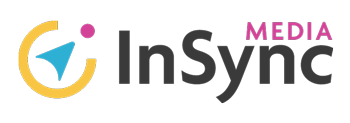Have You Planned Your Website’s Lead Generation Strategy?
In order to grow your business, it’s essential for you to consistently bring in new customers. The process of identifying people who might want to do business with you, then working to convince them to do business with you, is called lead generation. There are many ways that you can generate leads using the Internet, from traditional digital marketing techniques to social marketing. You want to identify the people who are good candidates to become customers of your company, then nurture them until they’re ready to buy.
Common Types of Lead Generation
There are tons of ways to generate leads–both online and off. Here are some of the most common today:
- Email Marketing: Gather potential customers email addresses, then market to them with emails.
- Marketing & Sales Funnels: Use content on the web to draw in potential customers, then nurture them through a sales funnel until they’re ready to make a purchase.
- Social Media: Use social media as a cost-effective way to connect with potential customers and develop your brand’s reputation.
SEO: By optimizing your web content for search, you can get discovered by people who are searching the web for a business like yours. - Social Media Paid Ads: Facebook and Instagram are popular platforms for paid advertising, where your ads are shown to targeted users based on demographics and behaviors.
- Google Ads: Get in front of a buyer-intent audience by targeting people who are actively searching for your products or services.
- Landing Pages: Landing pages on your company website are pages optimized around a certain keyword, which exist to sell or market one particular product or service to customers, without any other distractions.
How Leads Find Your Business Online
To undertake lead generation online, it’s important to be strategic about how you use each platform.
With social media, you can connect with followers of business that are like yours (either competitors or complementary companies), and you can post content with relevant hashtags, so people looking for businesses like yours will discover you organically.
Using SEO, you can optimize around keywords that are related to what your business does, as well as keywords related to where you’re located geographically.
If you use email for lead generation, you can send emails with valuable knowledge or direct sales information to potential customers who’ve given you their contact info.
Finally, your website is also a source of lead generation. By optimizing it for search and making it a useful resource, you can convince people to buy from you.
Best Practices for Email Lead Generation
When it comes to generating leads, email marketing is key. Studies show that email marketing is powerful and cost-effective; in fact, for every $1 you spend on email marketing, you can expect a return of $38, on average.
In order to effectively implement email marketing, create a system through your website to generate more leads for your business. Offer a free download, an online quiz, or a free product sample in exchange for an email address. Put your offer at the top of your page so that it is simple and straightforward for your visitors to opt in.
If you are a traditional brick-and-mortar store, then make sure you are collecting email addresses at point of sale.
It is important to make it highly visible and clear that your audience is opting in to receive email marketing messages from you. Include an unchecked box so they can consciously opt-in, or send a followup email asking them to opt-in to receive more messages from you. This is especially vital if you plan on marketing in the EU (European Union) with their strict GDPR laws. While the United States currently does not have laws like GDPR, it is likely we will in the future.
